In today’s hyper-connected world, customer experience (CX) is no longer just a competitive advantage, it’s the battlefield where brands win or lose.
As digital expectations rise, artificial intelligence (AI) is emerging as the transformative force that allows marketers to not only keep pace but stay ahead.
In this article, we explore how AI is reshaping the future of customer experience, powered by data, automation, and emotional intelligence.
2. The Role of AI in Customer Experience
AI is becoming a cornerstone in modern CX strategies, helping marketers understand, predict, and personalize interactions at scale. As the graph below shows, 60% of marketing professionals rely on AI to predict customer behavior and needs—the top driver for AI adoption. This reveals a clear shift from reactive to proactive customer management.
In addition, significant portions of marketers use AI to uncover frequent customer journeys (47%) and improve omnichannel messaging (45%), underlining the importance of delivering seamless, integrated brand experiences. Hyper-personalization and content customization also rank high, confirming that AI isn’t just about automation; it’s about relevance and timing.
3. Most common ways to use AI in customer service
AI tools are reshaping customer service by making support faster and smarter. As the graph shows, digital chatbots lead usage, handling common queries instantly. Automated agent insights help improve employee performance, while conversational AI enables natural, real-time interactions in both digital and voice formats.
Tools like agent and supervisor assistants also play a growing role, offering live guidance and performance tracking. The increasing use of voice-based AI highlights a push for consistent, multi-channel customer experiences.
4. Benefits for Brands
Brands are embracing chatbots and conversational AI to boost efficiency and customer satisfaction. The graph shows wide adoption or plans to adopt these tools, driven by their ability to reduce response times and personalize service.
Chatbots handle routine tasks, while conversational AI delivers more natural, context-aware support. With chatbot use already high, conversational AI is quickly catching up—proving its growing impact on both operations and user experience.
5. Challenges & Ethical Considerations
Despite the promising growth, the path to AI-powered CX is not without hurdles. As reflected in the pie chart, the most significant challenge is leadership support (45%), indicating that executive buy-in remains a critical barrier to full-scale AI implementation. Equally important are technology and data infrastructure (20%) and team resources (20%), underlining the complexity of integrating AI into existing ecosystems.
Cultural resistance and legal regulations also play a role, reminding brands to approach AI with transparency, fairness, and ethical responsibility. These considerations are essential to maintaining trust in an AI-driven CX future.
TOO LONG TO READ?
-
AI is redefining customer experience, shifting brands from reactive to proactive engagement.
-
60% of marketers use AI to predict customer behavior, enabling smarter personalization and seamless omnichannel interactions.
-
Chatbots and conversational AI dominate customer service tools, improving speed, consistency, and natural communication.
-
Brands benefit from AI through faster service, cost savings, and enhanced customer satisfaction—conversational AI adoption is rising fast.
-
Key challenges include lack of leadership support, technical complexity, and ethical concerns, requiring responsible and transparent AI use.
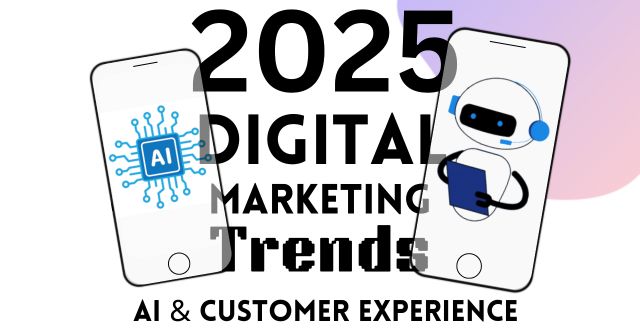
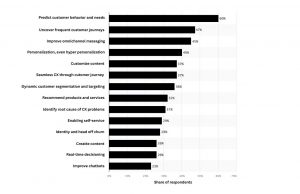
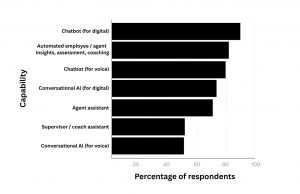
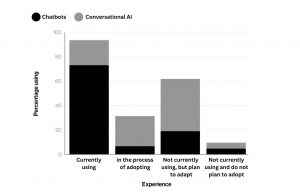
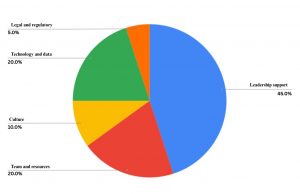



Interessting Yazid. The “Too Long to Read” summary is super helpful for getting the key points quickly, and the graphs really make the trends easy to understand, nice work
Thanks Steve! I’m really glad you found the blog interesting. Which AI-driven customer experience trend mentioned in the blog do you think will have the most impact on businesses in 2025?
Great question, I think ai driven personalization will be the biggest trend bcause of the ability to tailor every aspect of the customer experience from product recommendations to personalized content is going to drive deeper engagement and boost customer loyalty
Totally agree, Steve! AI-driven personalization has the power to turn every interaction into a meaningful moment
Nice yazid, your blogs provides a fantastic overview of the key digital marketing trends of this year, especially how AI is transforming customer experiences
Thank you so much! I’m glad the blog gave you a clear picture of how AI is reshaping customer experience
Really enjoyed the blog, the part qbout how AI gives brands a competitive edge really stood out to me it’s amazing how much more connected and efficient marketing feels with the right tech behind it
Thank you! I totally agree with u Llorian, the competitive edge that AI offers is becoming a game changer